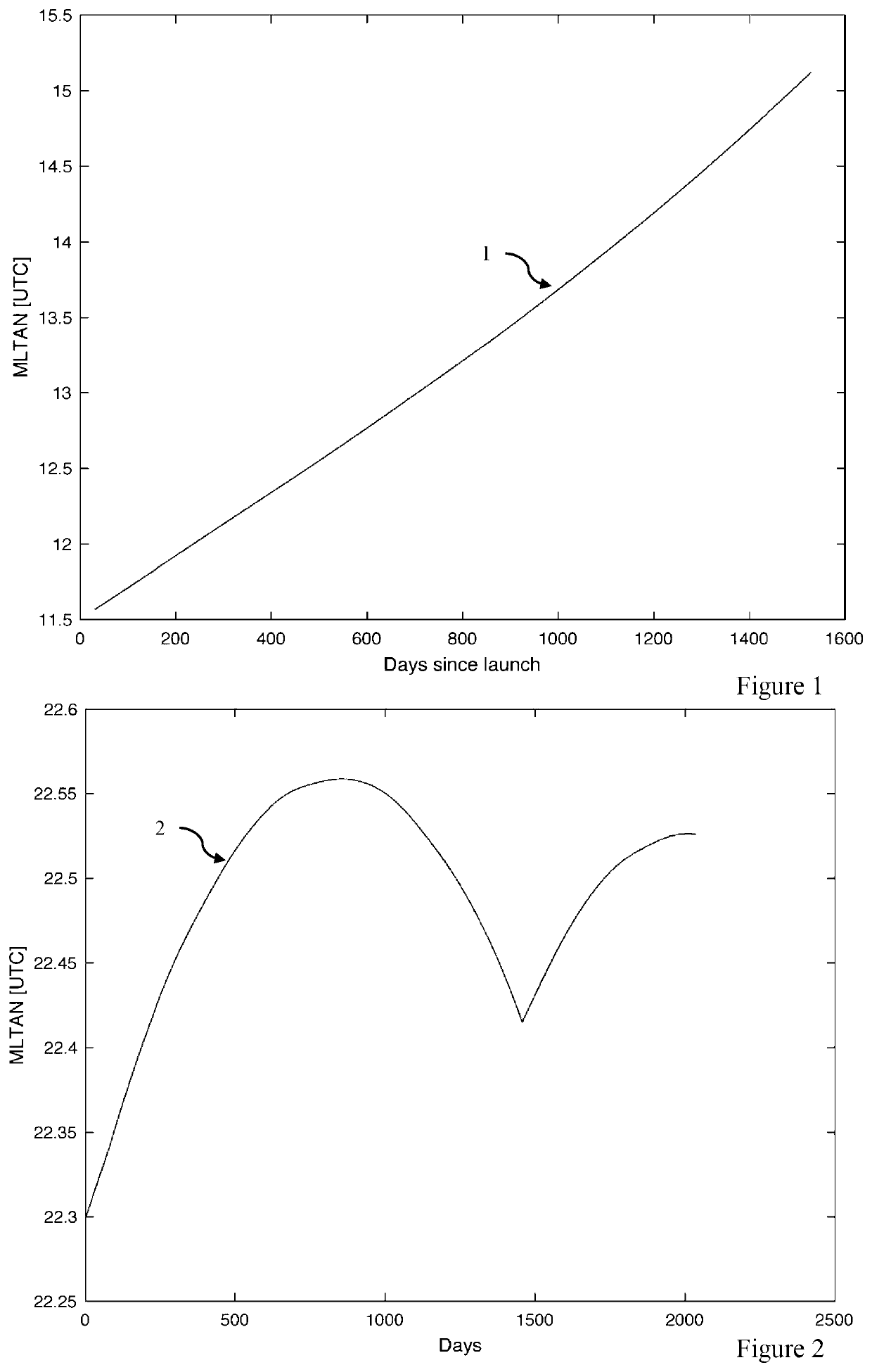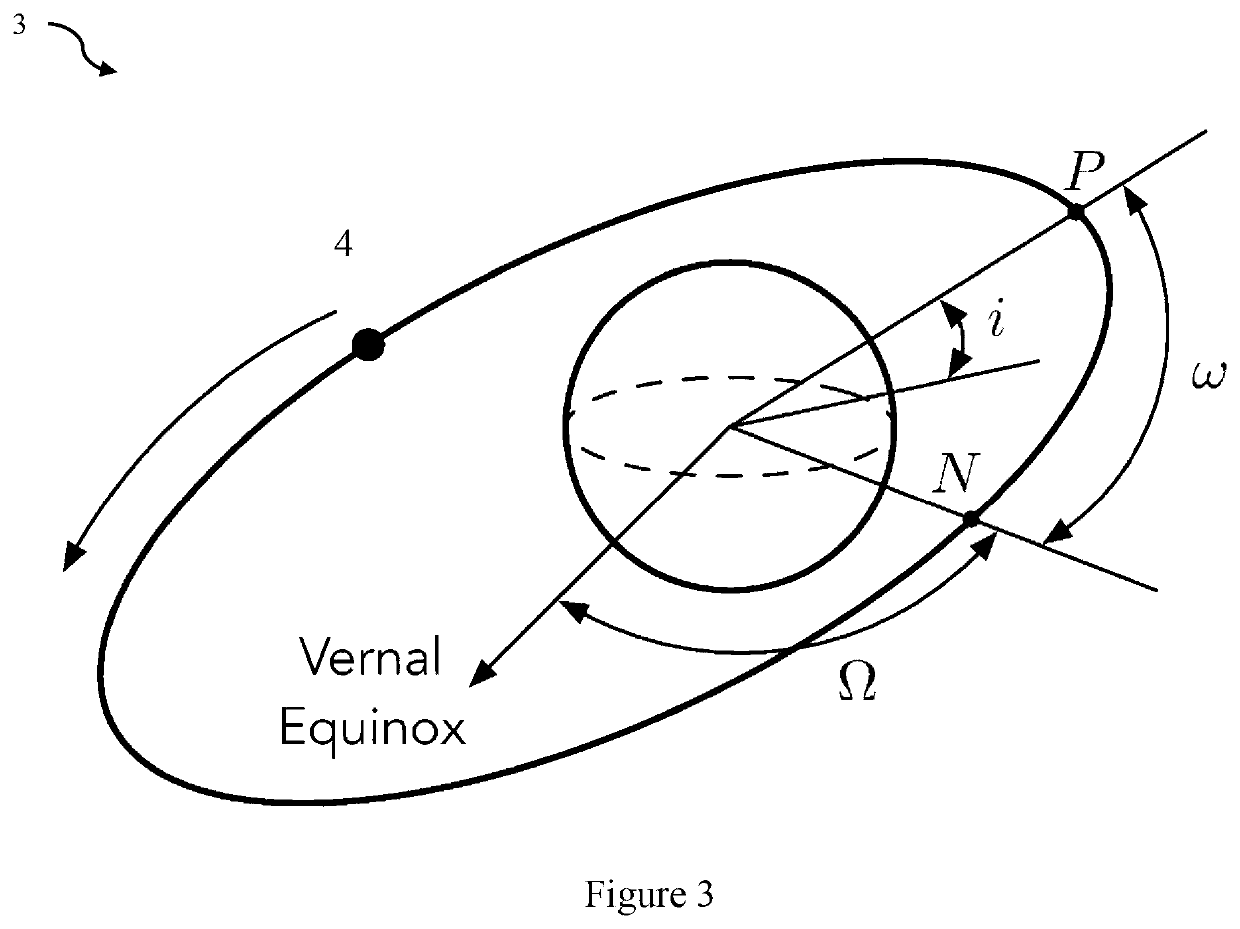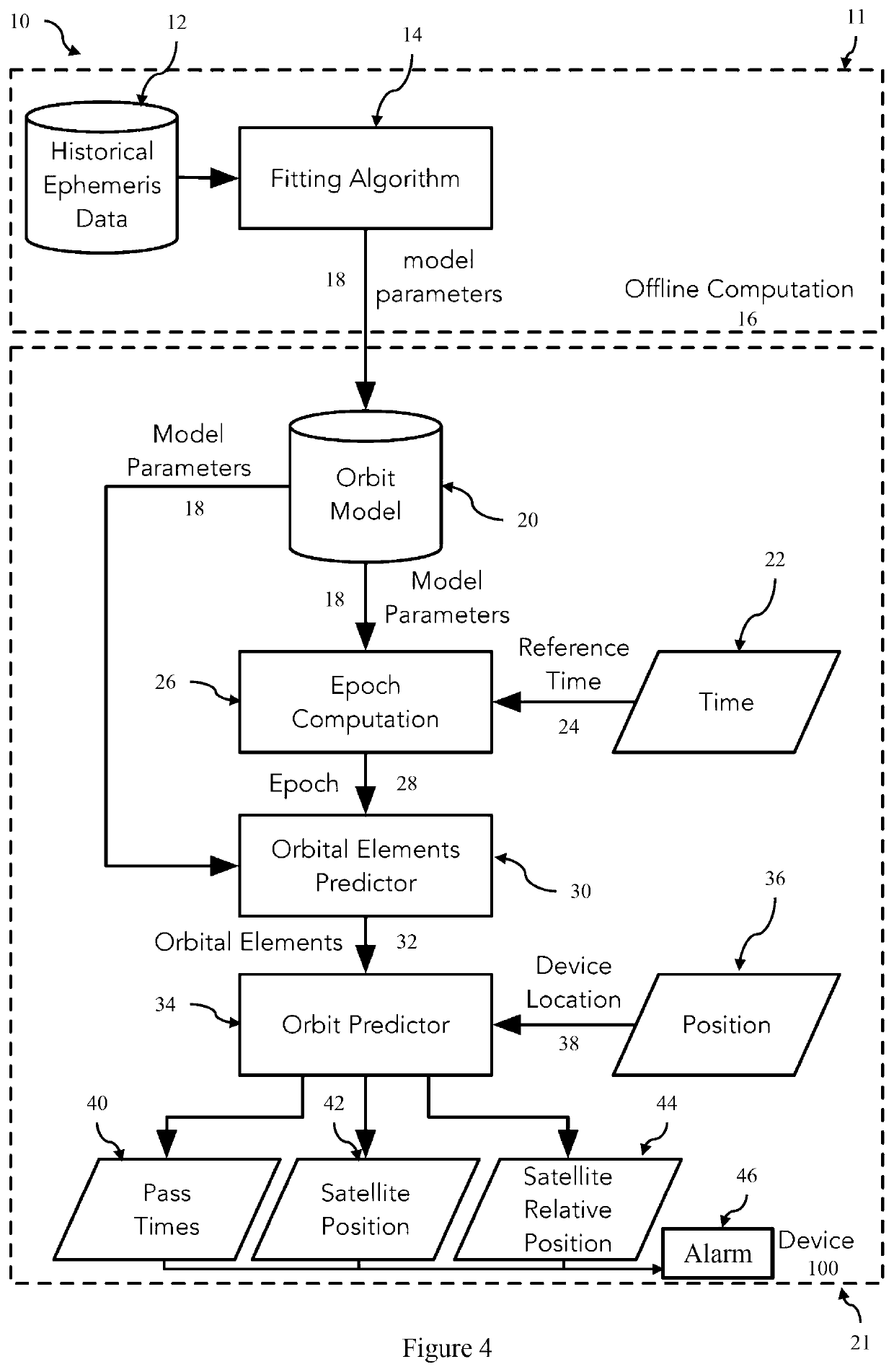System and method for generating extended satellite ephemeris data
- Summary
- Abstract
- Description
- Claims
- Application Information
AI Technical Summary
Benefits of technology
Problems solved by technology
Method used
Image
Examples
Embodiment Construction
[0063]Embodiments of a method for generating extended satellite ephemeris data for a satellite for use by a terminal apparatus will now be described. The new method that can be used to accurately predict satellite pass times for much longer time frames than currently possible using current TLEs and orbital predictors such as SGP4. Embodiments of the method are particularly applicable to satellites in uncontrolled orbits or minimally controlled orbits. Broadly historical orbital parameter data (e.g. from historical TLEs) are used to build a predictor for future values of the orbital parameters. The orbital parameter prediction model is then stored on the terminal apparatus (or an existing model can be updated), and at a desired epoch the pre-stored orbital parameter predictor is used to produce estimates of the orbital parameters for the satellite for that epoch (ie synthetic or predicted TLEs). The predicted orbital parameters are then used as input to an orbit predictor to produce ...
PUM
 Login to View More
Login to View More Abstract
Description
Claims
Application Information
 Login to View More
Login to View More - R&D
- Intellectual Property
- Life Sciences
- Materials
- Tech Scout
- Unparalleled Data Quality
- Higher Quality Content
- 60% Fewer Hallucinations
Browse by: Latest US Patents, China's latest patents, Technical Efficacy Thesaurus, Application Domain, Technology Topic, Popular Technical Reports.
© 2025 PatSnap. All rights reserved.Legal|Privacy policy|Modern Slavery Act Transparency Statement|Sitemap|About US| Contact US: help@patsnap.com



